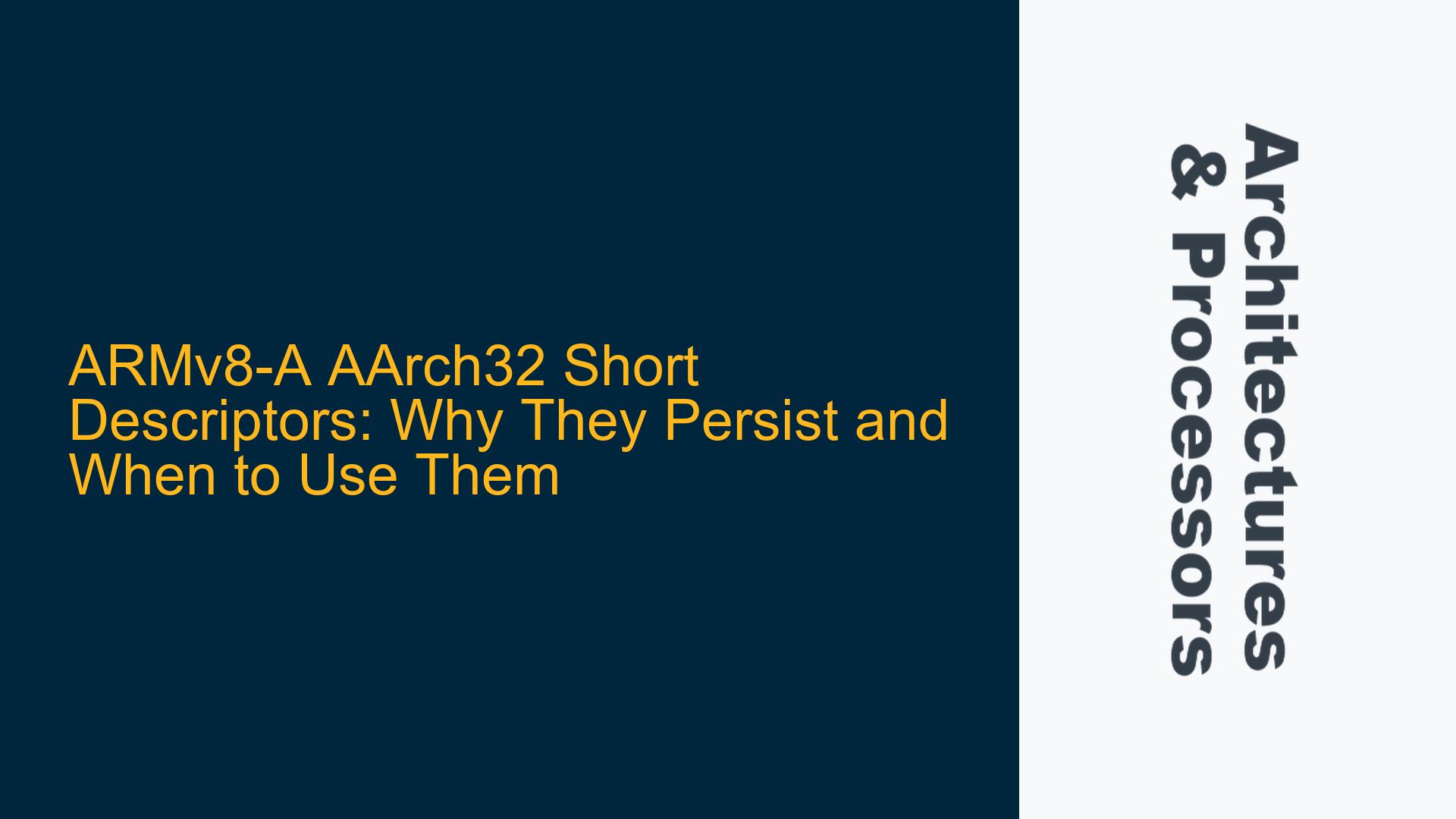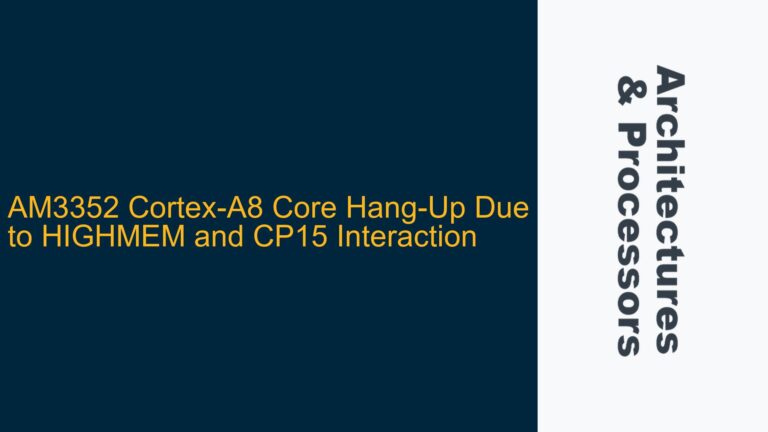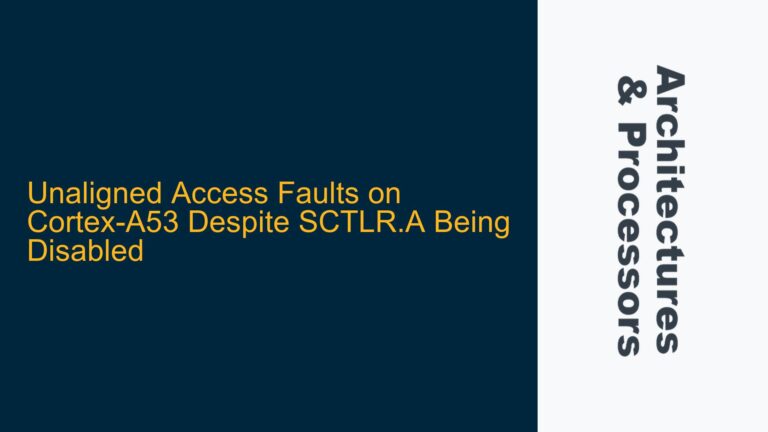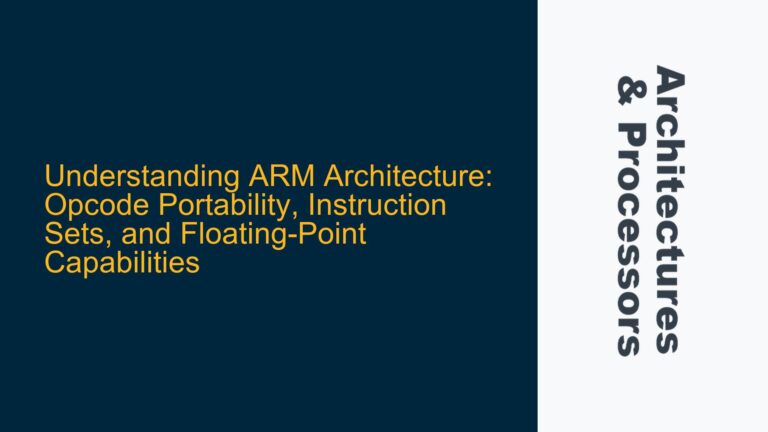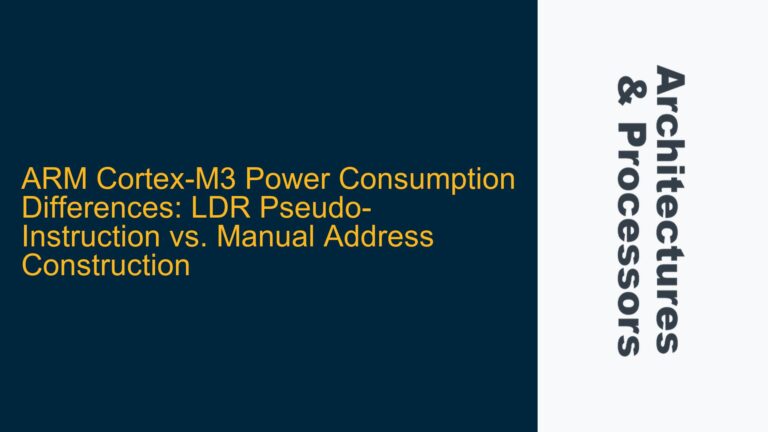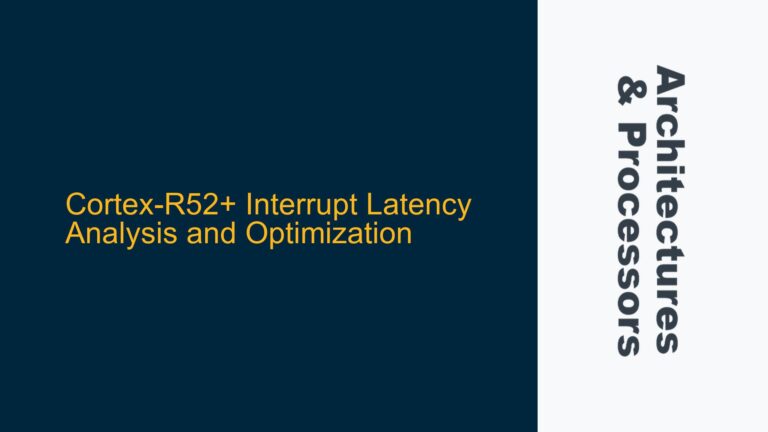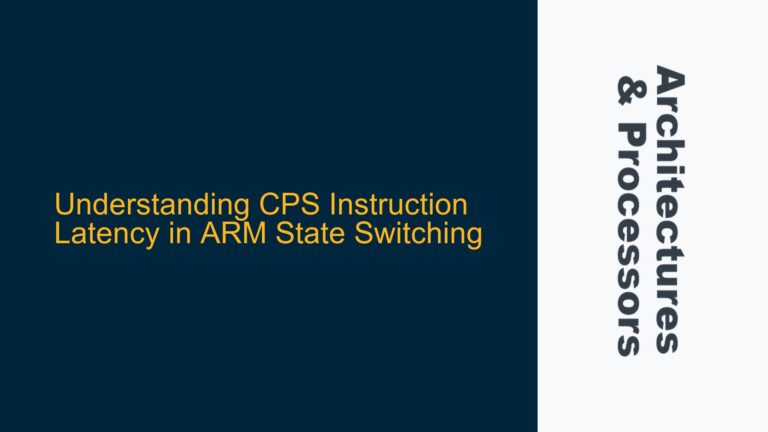ARMv8-A AArch32 Short Descriptors vs. Long Descriptors: A Comparative Analysis
The ARMv8-A architecture, which supports both AArch32 and AArch64 execution states, provides two distinct translation table formats for memory management in the AArch32 state: short descriptors (32-bit) and long descriptors (64-bit). While the long descriptor format is more versatile and capable of handling a broader range of memory management tasks, the short descriptor format remains supported in the ARMv8-A architecture. This raises the question: why does ARM continue to support short descriptors when long descriptors appear to be a superset of their functionality?
The short descriptor format, despite its limitations, offers specific advantages in certain scenarios, particularly in embedded systems and legacy applications. Understanding the nuances of both formats is critical for optimizing memory management in ARM-based systems. This post delves into the technical details of short and long descriptors, explores the reasons for the continued support of short descriptors, and provides guidance on when to use each format.
Short Descriptors: Memory Efficiency and Legacy Compatibility
Short descriptors are 32-bit data structures used in the AArch32 state to define memory mappings in the ARMv8-A architecture. They are primarily employed in systems where memory efficiency is paramount, such as embedded systems with constrained resources. The key advantage of short descriptors lies in their compact size, which reduces the memory footprint of translation tables. This is particularly beneficial in systems with limited RAM or where the translation tables must fit within a small cache.
One of the primary reasons ARM continues to support short descriptors is backward compatibility. Many legacy systems and software were designed around the ARMv7 architecture, which exclusively used short descriptors. By retaining support for short descriptors in ARMv8-A, ARM ensures that these legacy systems can transition to newer architectures without requiring significant modifications to their memory management schemes. This is especially important in industries where long product lifecycles and strict certification processes make it impractical to overhaul existing software.
Additionally, short descriptors are simpler to implement and manage in systems that do not require the advanced features provided by long descriptors. For example, in systems with flat memory models or where memory protection is not a critical concern, short descriptors offer a lightweight and efficient solution. Their simplicity also reduces the complexity of the Memory Management Unit (MMU), which can lead to lower power consumption and improved performance in resource-constrained environments.
However, short descriptors have limitations. They support a maximum of 40-bit physical addresses, which may be insufficient for systems requiring large memory spaces. They also lack support for certain advanced features, such as nested virtualization and extended memory attributes, which are available in the long descriptor format. These limitations make short descriptors unsuitable for modern, high-performance systems with complex memory management requirements.
Long Descriptors: Enhanced Flexibility and Advanced Features
Long descriptors, on the other hand, are 64-bit data structures that provide a more comprehensive and flexible memory management solution. They support larger physical address spaces (up to 48 bits) and offer advanced features such as support for nested virtualization, extended memory attributes, and finer-grained control over memory permissions. These capabilities make long descriptors the preferred choice for modern systems with complex memory management needs.
One of the key advantages of long descriptors is their ability to support Stage 2 translation in virtualization scenarios. Stage 2 translation is used by hypervisors to map virtual machines’ physical addresses to the actual physical addresses of the host system. Short descriptors do not support Stage 2 translation, which limits their usefulness in virtualized environments. Long descriptors, with their extended address space and support for nested translation tables, enable efficient and secure virtualization.
Long descriptors also provide greater flexibility in defining memory attributes and permissions. For example, they support extended memory types (e.g., Device-nGnRnE, Device-nGnRE, Device-GRE) and additional access control bits, which are essential for implementing sophisticated memory protection schemes. These features are particularly important in systems requiring high levels of security and reliability, such as automotive and industrial control systems.
Despite their advantages, long descriptors are not without drawbacks. Their larger size increases the memory footprint of translation tables, which can be a concern in systems with limited resources. Additionally, the increased complexity of long descriptors can lead to higher power consumption and reduced performance in certain scenarios. These trade-offs must be carefully considered when choosing between short and long descriptors.
Choosing Between Short and Long Descriptors: Best Practices and Recommendations
The decision to use short or long descriptors in an ARMv8-A AArch32 system depends on several factors, including the system’s memory requirements, performance constraints, and legacy compatibility needs. Below are some guidelines to help determine the most appropriate translation table format for a given application.
1. Memory-Constrained Systems: In systems with limited memory resources, short descriptors are often the better choice due to their compact size. For example, in microcontroller-based embedded systems, where RAM and cache sizes are typically small, short descriptors can significantly reduce the memory overhead of translation tables. This is particularly important in real-time systems, where deterministic performance and low latency are critical.
2. Legacy Systems and Software: If the system or software is based on the ARMv7 architecture or earlier, short descriptors should be used to maintain compatibility. This is especially relevant in industries such as aerospace and medical devices, where legacy software must often be retained due to regulatory and certification requirements. In such cases, the benefits of long descriptors may not justify the cost and effort of migrating to a new memory management scheme.
3. High-Performance and Virtualized Systems: For systems requiring large memory spaces, advanced memory protection, or support for virtualization, long descriptors are the preferred option. Their ability to handle larger physical addresses and support Stage 2 translation makes them indispensable in modern, high-performance systems. Additionally, the extended memory attributes and finer-grained control provided by long descriptors are essential for implementing robust security mechanisms.
4. Mixed-Use Systems: In some cases, a hybrid approach may be appropriate. For example, a system could use short descriptors for low-memory regions and long descriptors for high-memory regions. This approach allows the system to balance memory efficiency with the need for advanced features. However, implementing such a scheme requires careful design and testing to ensure proper operation and avoid conflicts between the two descriptor formats.
5. Performance and Power Considerations: When performance and power consumption are critical factors, the choice between short and long descriptors should be based on a detailed analysis of the system’s requirements. Short descriptors, with their simpler structure, generally result in lower power consumption and faster translation lookaside buffer (TLB) lookups. However, in systems requiring frequent memory remapping or advanced features, the benefits of long descriptors may outweigh their higher resource usage.
In conclusion, the continued support for short descriptors in the ARMv8-A architecture is driven by the need for memory efficiency, legacy compatibility, and simplicity in certain applications. While long descriptors offer greater flexibility and advanced features, short descriptors remain a viable and often preferable option in resource-constrained and legacy systems. By understanding the strengths and limitations of both formats, developers can make informed decisions that optimize memory management in their ARM-based systems.
